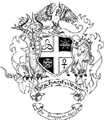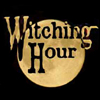
Candle making is useful for increasing the quality of your candle magick.
Melting the wax is the most dangerous part of candle making. The fumes from melting wax are flamable and can cause a serious fire.
Double boiler Use a double boiler to melt the wax. You heat water in a lower pot that then heats the upper pot. Never melt wax directly in a single pan or pot (the wax will catch on fire). It is better to use electric stoves rather than gas stoves because the open flame of a gas stove can ignite wax fumes. The water in a double boiler can’t get above 212° F. The double boiler helps distribute the heat evenly and helps to prevent dangerously high temperatures by seperating the wax from the heat source.
You can make your own homemade double boiler by placing a smaller pot into a larger pot. You can use a metal cookie cutter on the bottom of the pot to elevate the upper pot. A real double boiler has use for lots of kinds of cooking in addition to melting wax for candle making.
Fire extinguisher Keep a smother-style fire extinguisher (rated for grease fires) nearby. Review the instructions before you start work, to make sure you know how to operate the fire extinguisher if you need it. If the wax catches on fire, you need to smother the flames and put out the fire the same way that you would for a grease fire. If the fire is small enough, you may be able to smother it with a pot lid. Using water will only spread the fire (the burning wax will float on the water and spread around your kitchen).
Melting wax It will take a long time for the wax to melt. You need to keep a patient eye on the wax, because once it starts to melt the temperature of the wax will rise rapidly and catch fire. The flash point for wax is above 300° F. Use a thermometer to make sure that your wax never gets hotter than 250° F.
Put an inch or two of water into the lower pot. Bring the water to a boil. Once the water is boiling, turn down the heat to keep a steady simmer. Simmering water and rapidly boiling water are both at the exact same temperature, 212° F. You may need to occassionally add more water to make up for water lost to evaporation. Never let the double boiler run dry.
There are numerous on-line sources for candle wax. The most commonly used is paraffin. Food-grade paraffin makes shiny candles. Non-food grade paraffin may contain oils and other impurities, some of which may be toxic or harmful. Sometimes a mixture of paraffin and bee’s wax is used for magick candles.
Molds Once the wax is melted, you will want to pour it into a candle mold. There is a wide variety of metal pillar molds that can be used for candle making, offering a wide variety of shapes. Metal pillar molds are typically made from sheet metal or aluminum, but there are also plastic, latex, and silicone pillar molds. Metal pillar molds should last for years of use. As an alternative, you can use disposable molds, such as empty milk cartons (almost anything that won’t catch on fire when exposed to melted wax).
Wick Pick a wick that has the proper size for the diameter of mold you are using. If you are using a metal pillar mold, thread the wick through the wick-hole in the base of the mold. If you are using a homemade mold (such as milk carton), punch a small hole in the bottom of your mold. If you have trouble getting the wick through the wick hole (possibly because the wick end is frayed), dip the end in some molten was and roll it in your fingers until you have a pointed end on your wick.
Wick rod Place a wick rod over the top of your mold. bring the wick up from the wick hole at the base of the mold and tie the wick to the wick rod. Make sure that the wick rod is secure on top of your mold. A toothpick or small wooden stick serves as a fine wick rod. You want the wick to taut, but not too tight. If the wick is too tight, it might warp and ruin your candle mold.
Wick screw Secure the end of the wick to the wick hole with a wick screw. Don’t over-tighten the wick screw as it may cut or damage the wick. The purpose of the wick screw is to hold the wick firmly in place, not to seal the wick hole. Trim the wick with scissors or diagonal cutters. You want to leave about 1/2 inch ot one inch of wick sticking out the base of the mold.
Mold sealer Press mold sealer over the wick hole, wick screw, and wick. press firmly and create a tight seal so that no hot wax can leak out of the base of your mold. You do not want to be able to see any wick sticking out of the mold sealer.
Scents and colors For magick candles, you will almost always want to add scents and/or colors. You can use melted wax crayons, but that will tend to make your candles very smokey (and annoying). Dyes for candle making are easily available. Most scents are essential oils from various herbs. You can purchase candle making scents or you can prepare your own from raw herbs and/or from essential oils. Because essential oils are highly volatile, you will want to add the oils shortly before pouring the wax so that the oils don’t evaporate away on you.
Watch the temperature of the melting wax until it gets atound 175-185° F. Add fragrence oils, dyes, and other additives now, just before puring the wax into a mold. Mix well with a wooden spoon.
Initial pour Carefully pour the melted wax into your mold. You should have an old towel or cloth handy to wipe up any spills. Fill your mold to about 1/2 inch from the top of the mold. Save some melted wax for later, but don’t return it to the heat yet (to preserve scents and colors).
Relief holes Let the wax cool a bit until a surface has formed. Poke several relief holes into the surface to allow for the wax to naturally shrink as it cools and solidifies. The relief holes should surround the wick and should be poked almost all the way down the wax 9about one inch less than the total depth of the mold). Air will get sucked into these relief holes. Withou relief holes the candle might get air cavaties, the wick might get pulled off center, or the external walls of the candle might get warped and deformed. You may need to poke relief holes several times during cooling to keep the air vents open and clear.
Let the candle cool completely to toom temperature. This may take several hours for a typical candle, and may take more than a day for a really large candle.
Repour Re-melt the leftover wax you saved from before. Heat to a temperature about 5-10° F. higher than the original pouring temperature. Carefully pour the melted was into the relief holes. Fill to a level just below the original filling. Filling higher will leave an ugly visible horizontal seam line at the base of your candle. Overfilling might also allow new wax to seep down between the mold and the candle, creating very ugly streaks on the outside of your candle.
Remove candle Remove the mold sealer and the wick screw. Your candle should slide easily out of the mold. If you have a pronlem getting the candle out of the mold, try refrigerating it for about 15 minutes. the cooling should shrink the wax from the sides of the mold and allow the candle to easily slide out. If you used a homemade mold (such as a milk carton), you may optionally tear or cut the mold away from your candle (do this gently so you don’t damage your new candle).
Trim wick Use scissors or diagonal cutters to trim the end of the candle wick that is tied to the wick rod. This will be the bottom of your candle, so you want to cut the wick cleanly so that the bottom of the candle is flat. Cut the top wick so that you leave about 1/4 inch of wick above the top of the candle. If the base of the candle isn’t smooth enough for you, you can heat up a cookie sheet and then press the base of the candle against the heated cookie sheet. The heated cookie sheet will melt the candle enough to make a flat base.
Burn candle Burn your candle on a candle holder away from drafts, small children, and pets. never leave a burnsing candle unattended.
See also: candle magick













